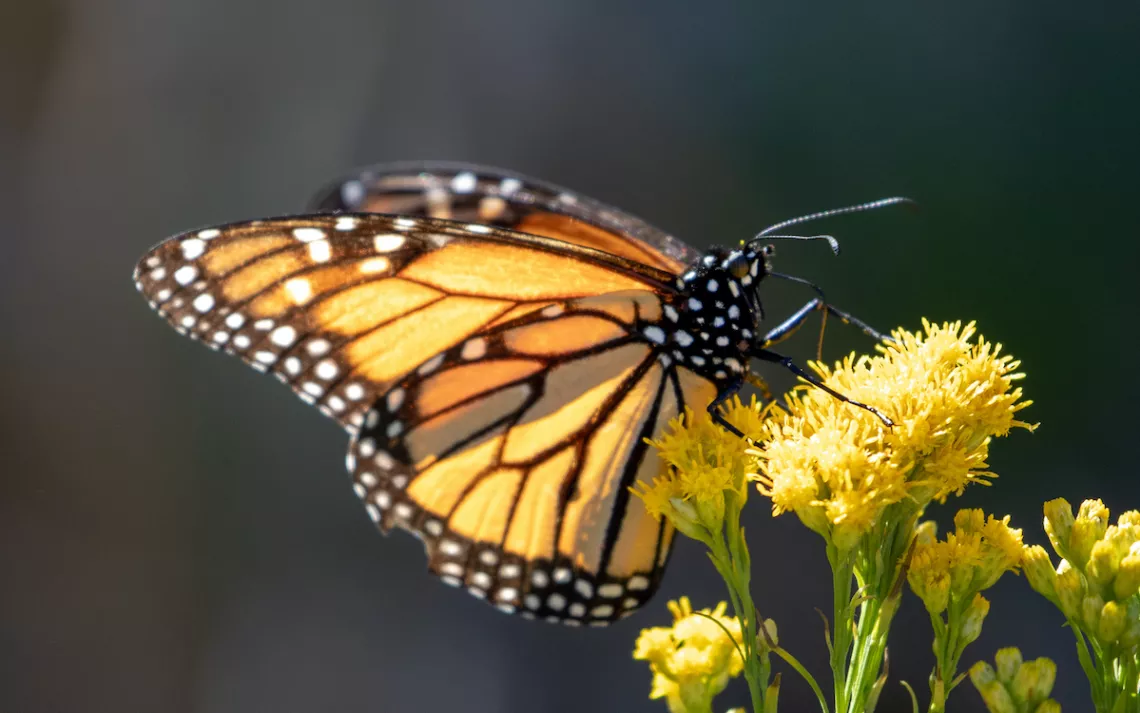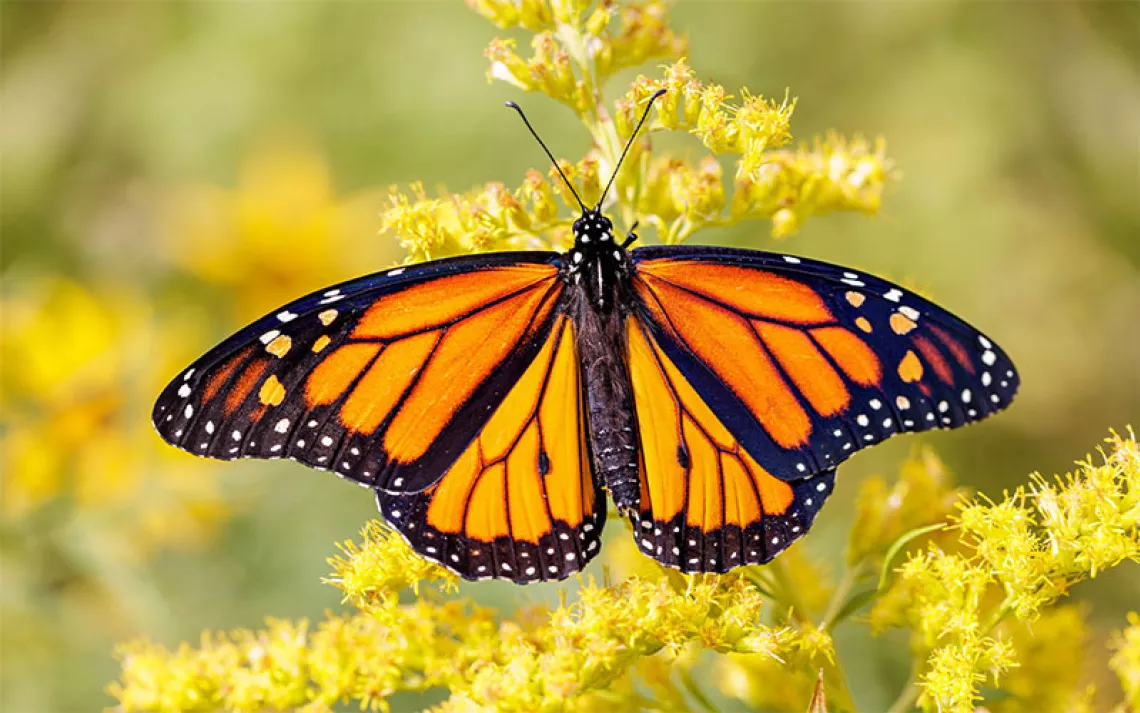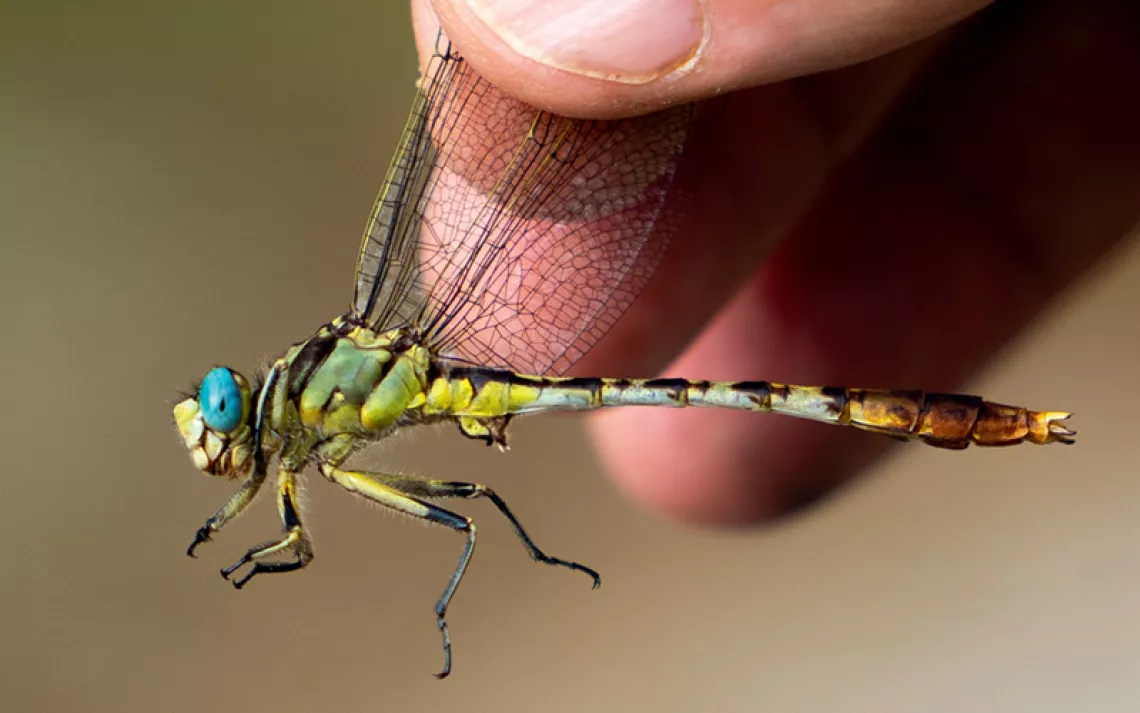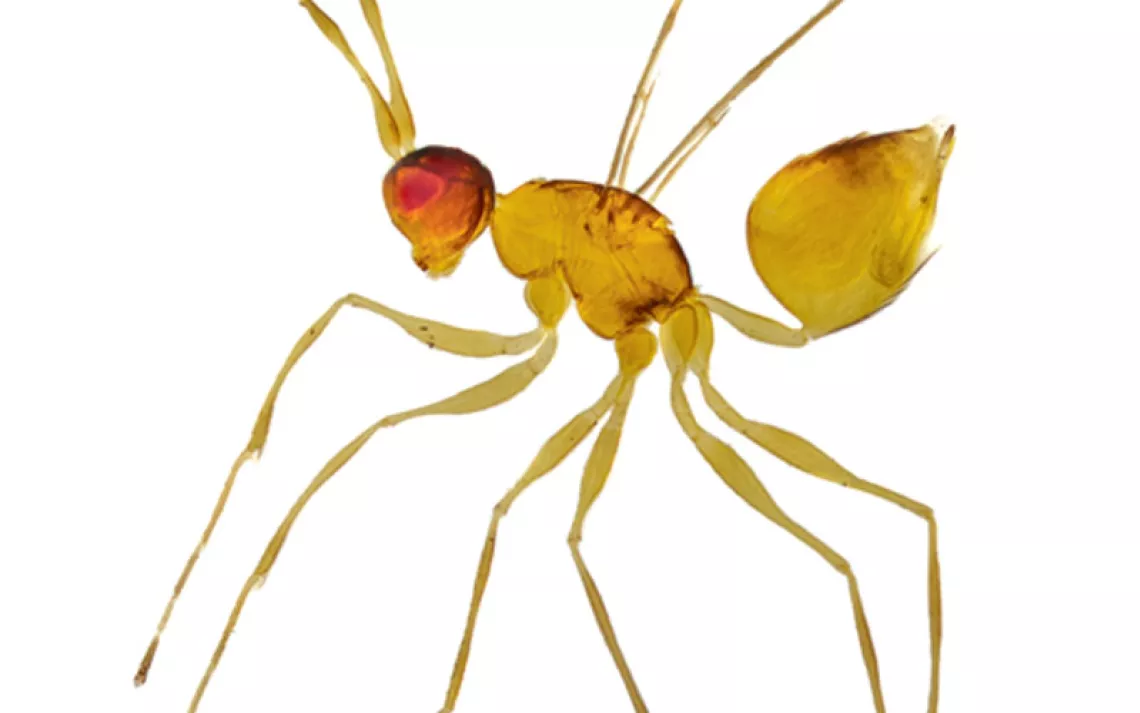Citizen Scientists Rally for Pacific Northwest Monarchs
The butterflies made a showy return this year after a long absence

Photo by iStock/htrnr
On August 1, Dr. David James, an entomologist at Washington State University, posted a long message on his Facebook page Monarch Butterflies in the Pacific Northwest. “I’ve been keeping close track of the numbers, and there are 12 times as many reports of monarchs in the PNW this July than there were in July 2021, when a total of 13 adults were reported from OR, WA, and ID,” he wrote. “All the signs are pointing to a very good number of fall migrants being produced in the PNW this year.” James encouraged people to keep watching for the orange and black butterflies through the month before they left the Pacific Northwest for their winter homes on the California coast.
Pictures of the colorful insects filled the comments section. Fans posted reports from Pasco, Washington; Hagerman, Idaho; and Junction City, California. These monarch enthusiasts are key to helping researchers like James learn more about migration patterns while doing the important conservation work of supporting the butterflies on their journeys.
Like people, monarch butterflies west of the Rocky Mountains are more dispersed, making them difficult to track. Comparatively little is known about the monarchs that flutter into Oregon, Washington, Idaho, and British Columbia.
“The only definitive way to tell where [monarchs] go is to tag them and have them found again away from where they were tagged,” says James, who’s been studying migrating monarchs in the Pacific Northwest for over 10 years. It’s a labor-intensive proposition: For every 200 butterflies tagged, only one is ever seen and reported.
In 2011, inmates from Washington State Penitentiary began helping James rear monarch caterpillars and fit the adult butterflies with tiny wing tags. Soon, the tagging project expanded to citizen scientists throughout the Pacific Northwest. For one study, nearly 14,000 butterflies were tagged. Thanks to this volunteer army, we know that most Pacific Northwest monarchs spend winters in California, but that some head south to Arizona and, possibly, on to Mexico, where the Eastern population winters.
Western monarchs have always numbered far fewer than their Eastern counterparts. Over 1.2 million Western monarchs were tallied during the annual Thanksgiving count in 1997, but around the turn of the century, numbers began declining, and in 2018, they began to crash. In the winter of 2020, fewer than 2,000 were counted—an all-time low.
Climate change may be partly to blame. That September was the hottest on record, at a time when monarchs would have been migrating through California, with many days over 100 degrees.
Late that same fall, Karen Krimmer Easton, an elementary school teacher in Palo Alto, California, discovered female monarchs laying dozens of eggs on the cut-back stalks of tropical milkweed plants in a community garden, well after the insects should have left for their overwintering sites. She had learned about James’s work after finding one of his tagged butterflies the year before, so she posted her discovery on his Facebook page.
“He said, 'That’s an amazing finding,'” Easton recalls. “And he asked if I could raise the caterpillars I rescued.” Through his Facebook page, James learned of other observations of winter breeding in the San Francisco Bay Area. He launched a formal study to track the phenomenon and recruited Easton and two other residents to help.
“Social media is invaluable to what we’re doing,” says James. “We were able to get real-time info on the breeding population in San Francisco, which hasn’t to date happened again.”
From January to June, Easton and her colleagues monitored the community garden and sites on the nearby Google campus for butterflies, eggs, and caterpillars; they also reared caterpillars and tagged and released adults. Toward spring, some of the tagged butterflies started heading north and east, suggesting they were beginning to migrate to Oregon and other parts of the Pacific Northwest. The study was published in the journal Insects.
“What I think happened, though it’s controversial, is that a lot of [monarchs] decided not to overwinter,” explains James, noting that most of his tagged butterflies from the Pacific Northwest were recovered inland in California that year, rather than at coastal overwintering sites. “They turned their reproductive systems on and formed breeding populations.” The monarchs were able to breed successfully in part because of the widespread availability of tropical milkweed, an introduced plant that, unlike native milkweeds, does not die back in winter.
Some groups, including the influential Xerxes Society, worry that tropical milkweed is disrupting monarchs’ normal migration, but James believes the butterfly is simply adapting. “They are changing their behavior and physiology to some extent in response to climate,” he says.
Climate change is just one of the challenges facing monarchs. Pesticide use and habitat loss in both breeding and wintering grounds have taken a huge toll, and numbers have dwindled everywhere. This summer, the International Union for Conservation and Nature added the monarch to its “Red List” of endangered species. The monarch is not a federally listed species in the United States. In 2020, the US Fish and Wildlife Service announced that while listing the monarch is warranted, it would not do so yet. Meanwhile, the agency has been pushing conservation efforts.
Monarch fans all over the West have gotten busy, planting milkweed, joining rearing and tagging efforts, and educating each other about the best ways to support pollinators. Apps like iNaturalist and Journey North allow people to submit observations of monarchs. Through social media, people can also share knowledge on everything from growing milkweed to identifying monarch eggs. “We learn so much quicker,” says James. “Ten years ago, I’d be answering all the questions. Now I don’t have to.”

Sign up to receive Sierra News & Views
Get articles like this one sent directly to your inbox weekly.
With this action you affirm you want to receive Sierra Club communications and may vote on policy designated by the Sierra Club Board.
Dozens of advocacy groups have sprung up to help the beloved butterflies. Robert Coffan cofounded Southern Oregon Monarch Advocates to help monarchs in his region. “We in Southern Oregon are one of those first links in the chain for migrating monarchs: Some stay here, some continue on,” says Coffan. “Our goal is to help and make that link stronger.” He and others have helped plant monarch “way stations,” hosted milkweed-growing workshops, and held “release parties” for tagged monarchs with kids.
While social media is vital for information sharing, the real outreach still needs to be out in nature and in person, says Coffan. “Giving each butterfly a name; having the kids write the data down in their squirrely little handwriting—it really plants a seed.”
He supports the Fish and Wildlife Service decision to hold off on listing the monarch so people can more freely help the butterflies. In April 2021, following the paltry counts from the preceding winter, the California Department of Fish and Wildlife prohibited the rearing of monarchs. This year, the state of Washington has followed suit. Monarch Alert, a citizen science research project based at Cal Poly, has suspended its tagging program, and James will have to rely on butterflies tagged only in Oregon and Idaho.
The moratorium also means Easton can no longer keep monarch caterpillars in her classroom. “It’s a shame,” says Easton. “The way kids learn how to love and respect the monarch is by experiencing them—being able to touch them and watch them grow.”
The moratorium could be lifted if the monarch shows signs of sustained recovery. Last year, in a remarkable rebound, nearly 250,000 monarchs were tallied at California overwintering sites—close to average for this century, but still far below historic numbers. Coffan is confident numbers will continue trending upward. Conservation efforts are working, he says, and it’s likely that, as James’s work suggests, there were more butterflies than were counted that previous, dismal year.
No doubt Coffan and legions of monarch supporters will have plenty to talk about at the second International Monarch Summit. In January, teachers and advocates, artists and researchers, and master gardeners from all over the West will gather. Western Monarch Advocates, which Coffan also cofounded, organized the first such summit in 2020, right before the pandemic.
“We thought if we could get together and network and talk about things, even the controversial things, we could do all of the things we’re already doing better,” says Coffan. “If that’s all we do, our Westerns monarch population will win.”
 The Magazine of The Sierra Club
The Magazine of The Sierra Club



